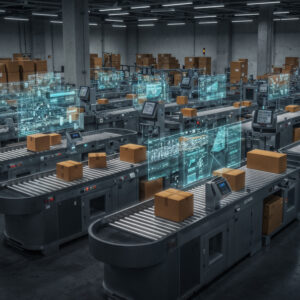In every manufacturing industrial sector, there are many factors which affect the precision and the effectiveness of manufacturing a workpiece. Workholding system is also important. Although in many cases the manufacturing machines are highly effective and perform quickly, there are damages to the production output and low quality workpieces because the workholding is not effective. Some workpieces are extremely thin or difficult to hold. So, the manufacturing process might result in a lower level of precision and a lower speed of manufacturing, especially with High Speed Machining Center. In addition, the cutting tools are likely to get damaged or worn out sooner than expected because of overload. Therefore, workholding system has played a more significant role in the industries, especially in the sector where workpieces are highly complicated and unable to be held by ordinary chuck which accompanies the machine. It is also useful when there are a large number of routine workpieces which need to be processed and require the same level of precision in each of them. There are also other cases which require workholding system. That is the reason why there is a continual development of workholding system and each manufacturer has developed their workholding system in a different way to meet different needs.
The Hainbuch Modular Clamping System
Changing over from O.D. clamping to I.D. clamping without un-mounting the base clamping device is done in a matter of two minutes with the new Hainbuch modular system. The basic clamping device remains mounted on the machine and serves at the same time as an interface for other clamping devices. Whether I.D. or O.D. clamping, saw cuts or bar work, the pull-back effect of the mounted add-on clamping elements enables solid clamping with optimum characteristics, such as high rigidity, vibration reduction and maximum metal removal rates.

Clamping in all variants – when turning and milling
To make the modular system usable for smaller quantities and material dimensions up to a diameter of 200 mm, the jaw module was launched. Mandrels and clamping heads can also be used in the basic unit. So the modular system is the perfect » three-in-one system« – I.D. clamping, O.D. clamping and jaw clamping.
Live centres with accuracy parts
A live centre, often shortened to centre, is a tool that has been ground to a point to accurately position a workpiece on an axis. They always have an included angle of 60°, but in heavy machining situations an angle of 75° is used.
The primary use of a live centre is to ensure concentric work is produced; this allows the workpiece to be transferred between machining (or inspection) operations without any loss of accuracy. A part may be turned in a lathe, sent off for hardening and tempering and then ground between centers in a cylindrical grinder. The preservation of concentricity between the turning and grinding operations is crucial for quality work.
A live center is also used to support longer workpieces where the cutting forces would deflect the work excessively, reducing the finish and accuracy of the workpiece, or creating a hazardous situation.
A live centre has applications anywhere that a centered workpiece may be used; this is not limited to lathe usage but may include setups in dividing heads, cylindrical grinders, tool and cutter grinders or other related equipment. The term between centres refers to any machining operation where the job needs to be performed using live centers.
ADVANTAGES AT A GLANCE of ROEHM Live centres
• Maximum concentricity and optimal force absorption thanks to proven precision bearings
• Special lubrication for long service life and little required maintenance
• Minimum interference contour thanks to slender housing shape
• Body made of forging blanks

References: HAINBUCH GMBH & KRASSTEC CO., LTD.





